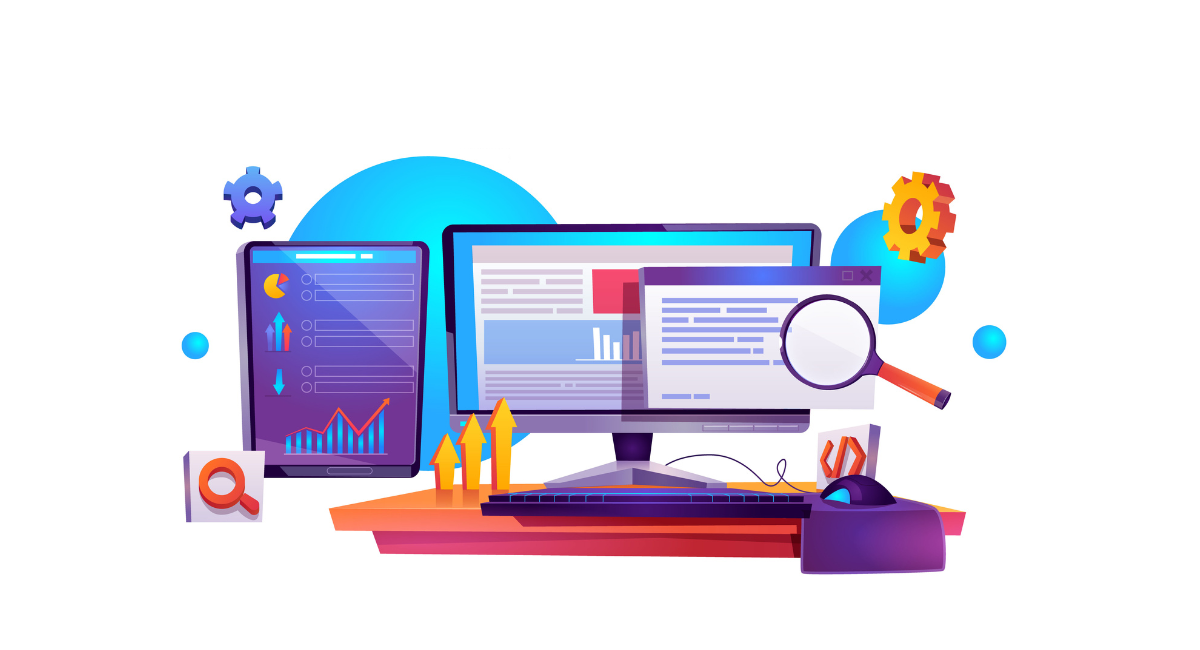Measurement and assessment in education are the keystone to understanding student progress and tailoring teaching strategies. A test result dashboard provides an overview of data concerning student performance, thereby turning raw test scores into action items.
This shall help not only teachers and administrators but the students themselves to keep track of their learning process. It provides visual and side-by-side analyses that enable the identification of strengths and weaknesses and encourages data-driven culture in education.
Benefits of Test Result Dashboards in Education

Tracking Student Performance
This is a very useful tool for teachers in keeping and analyzing student performance over some time. If test results are aggregated into a single platform, changes and improvements in the aptitude of the student are easily tracked.
This real-time, direct access to data enables the educator to adjust instructional methods for any student so that no student falls behind in his or her progress. These dashboards give feedback instantly, thus engaging the students by clearly showing how far their progress is.
Identifying Trends
Using dashboards to visualize test results helps in identifying educational trends within a classroom or a broader educational institution.
By collecting and analyzing data from various tests, educators can detect common areas of difficulty among students, peak performance periods, and other patterns that may not be evident without this consolidated view.
Such insights are critical for adapting teaching strategies, allocating resources more effectively, and planning future curriculum developments to enhance overall educational outcomes.
Importance of Data Visualization in Education
Enhancing Teaching Practices
Data visualization is the mighty strategy turning raw data into easy and interpretable graphics, hence helping the educator unpack this complex information fast and comprehensively.
Through the use of visual means such as charts, graphs, and heat maps, teachers are able to dig deeper into a student's performance and make informed, effective teaching practices.
This refinement assists not only in fine-tuning existing educational programs but in fashioning new teaching methodologies that would be data-driven and result-oriented.
Making Informed Decisions
The ability to visualize the data in education empowers the school administrators and policymakers to drive much better-informed decisions.
Clear insights into how different policies or teaching methods impact student outcomes will enable educational leaders to distribute resources and change things that will actually improve learning experiences.
It also helps to communicate the performance metrics performance to the outside audience of parents and stakeholders for transparency and accountability in educational institutions.
Features of a Comprehensive Test Result Dashboard

Customization Options
An important attribute of an efficient test result dashboard is the ability to customize it based on needs. The teacher should, therefore, be able to manipulate the dashboard to suit his or her class or even students.
This includes choosing what metrics are to be displayed, such as test scores, completion rates, and participation. The layout should also be configurable so that different users can set it with respect to their priorities.
Personalization of dashboards saves teachers a great deal of time by easy visualization of relevant information in decision making.
Comparison Tools
Comparison tools within dashboards are crucial for contextualizing student performance over time or against set benchmarks. These tools can display progress across different terms or academic years, and compare individual student results against class averages or even national averages.
Such comparisons help educators identify trends and outliers, which can prompt further investigation and targeted teaching strategies.
Real-time Updates
Real-time updates are another essential characteristic of a complete dashboard. This feature ensures that information displayed is current and reflects the newest inputs and ratings.
Real-time data is particularly useful in monitoring immediate effects of instructional changes or interventions. This helps educators make changes in strategies quickly and effectively.
Using Dashboard.orisools for Student Improvement
Targeted Interventions
Detailed, up-to-date test results make it possible to implement targeted interventions among several students who might lag. Using the data trends and performance patterns, educators can tell areas where students are in need of further support.
Interventions can be tailored by providing more resources, adapting learning methods, or giving extra tutoring. These tailored approaches help in the effective bridging of individual learning gaps.
Goal Setting
Dashboards can also efficiently facilitate the setting of goals by providing a clear view of student performance and progress. Setting achievable and measurable goals for teachers and students about past data and future aspirations is possible.
This gets the students moving and anchors specific targets for them to work up to. This review of the goals regularly through the dashboard keeps one focused on the tasks, and it feels good as they are able to see their own growth.
Case Studies: Successful Implementation of Test Result Dashboards
High School X: Increasing Graduation Rates
High School X implemented a test result dashboard to address the challenge of boosting student graduation rates. With an analytic lens into student data, the dashboard would help identify students who were least likely to graduate on time and take early precautions.
It provides insights into course performance, attendance record, results in different kinds of exams, among others, which went on to form the base for designing targeted support initiatives for individual students. In the first year alone, this school was able to increase its graduation rate by 15%.
Elementary School Y: Closing Achievement Gaps
Using a dashboard tool, Elementary School Y focused much attention on closing the achievement gaps for its very diverse student body.
The dashboard provided teachers and administrators with the ability to track standardized test scores based on demographic groups, such as race and socioeconomic status.
Armed with this data, the school designed specific instructional strategies to assist underperforming groups. In two years, the school showed a huge drop in the achievement gap, showing improvement specifically in mathematics and reading scores.
Tips for Effective Data Interpretation
Setting Baselines
Before leveraging a test result dashboard, it is crucial to establish clear baselines. Baselines act as reference points from which progress can be measured.
Schools should determine average past performances, set minimum competency levels, and define what constitutes academic excellence. Establishing these benchmarks helps in accurately gauging improvements or declines in student performance over time.
Seeking Patterns
Interpreting data effectively involves looking for patterns that can dictate further action. This includes identifying trends over time, such as improvements in certain subjects or times of the year when students typically underperform.
It also involves comparing cohorts to understand if implemented strategies are yielding better results in newer groups versus older ones.
Taking Action
The ultimate goal of data analysis using dashboards is to take informed actions that enhance student outcomes. Based on the insights gained, schools should plan and implement interventions.
This could mean adjusting teaching methods, increasing resource allocation, or providing additional support for struggling students. Continuous monitoring to assess the effectiveness of these actions is essential, allowing for timely adjustments to ensure educational goals are met.
Book a Demo and experience ContextQA testing tool in action with a complimentary, no-obligation session tailored to your business needs.
Conclusion: Transforming Education with Data-Driven Decision Making
The implementation of test result dashboards and comparison tools brings about a sea change in monitoring and analyzing educational progress.
Data that is this clear, concise, and actionable empowers educators to make informed choices that will have a direct impact on student learning outcomes.
Moreover, they enable more customized teaching and finding the strengths and weaknesses of each student. Eventually, this may lead to the adoption of data-driven decision-making tools in education, raising student achievement and educational practice to their highest level.
Also Read - Mastering API Testing with Postman: A Complete Guide to Using the Postman Runner
We make it easy to get started with the ContextQA tool: Start Free Trial.
